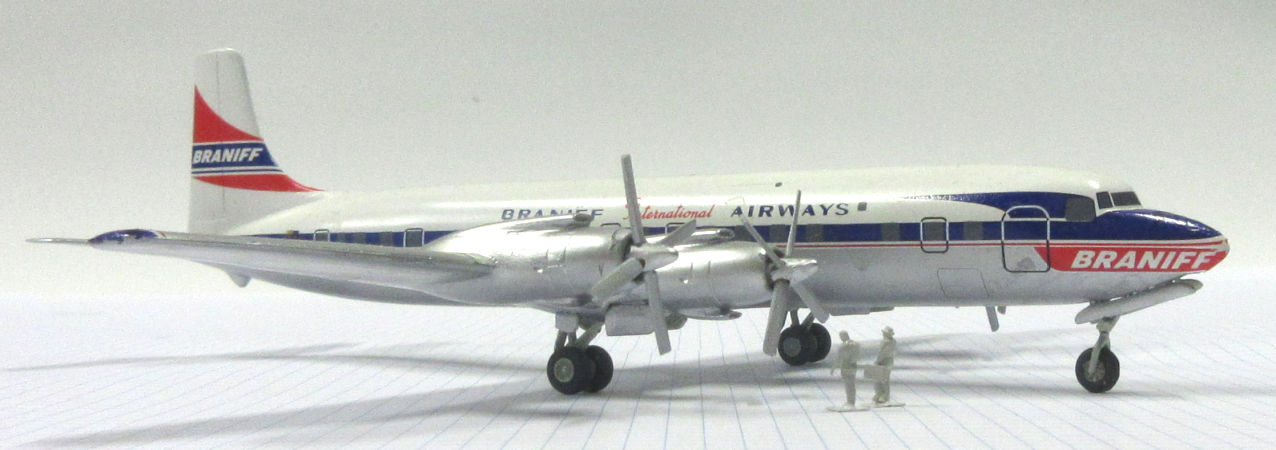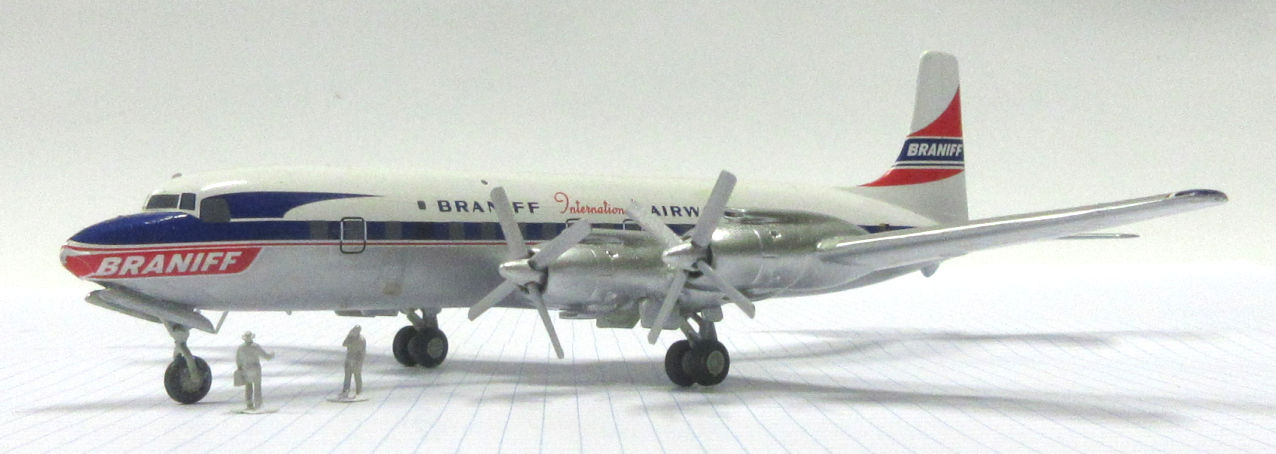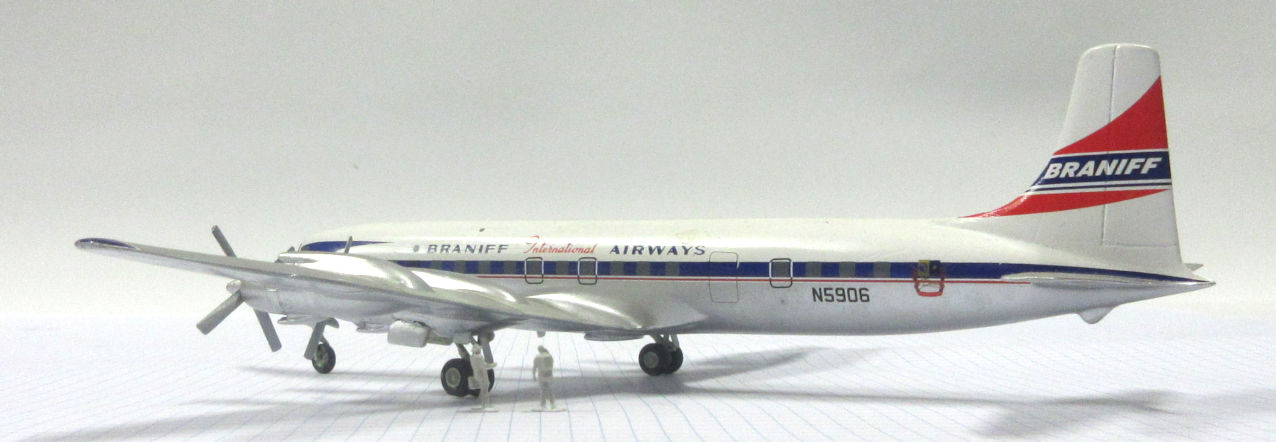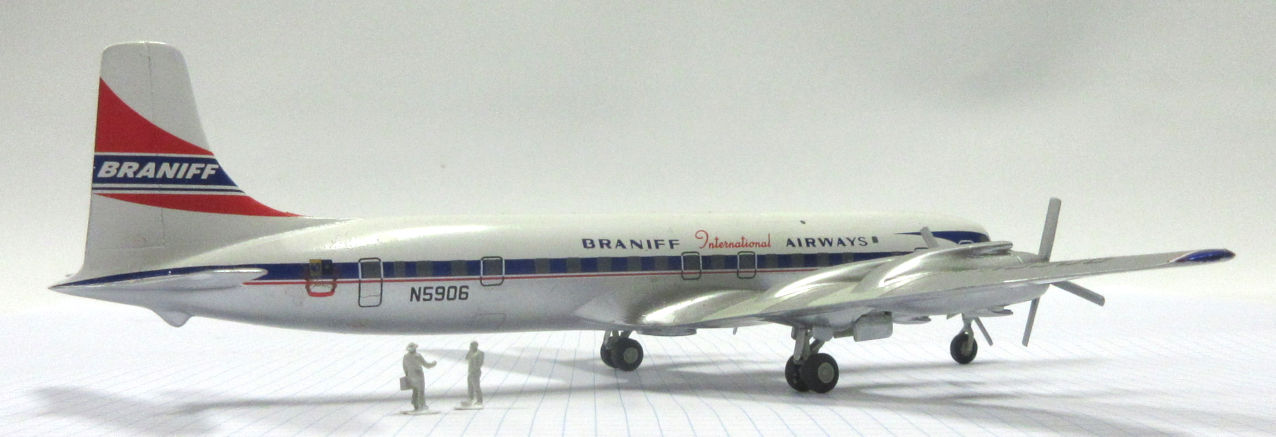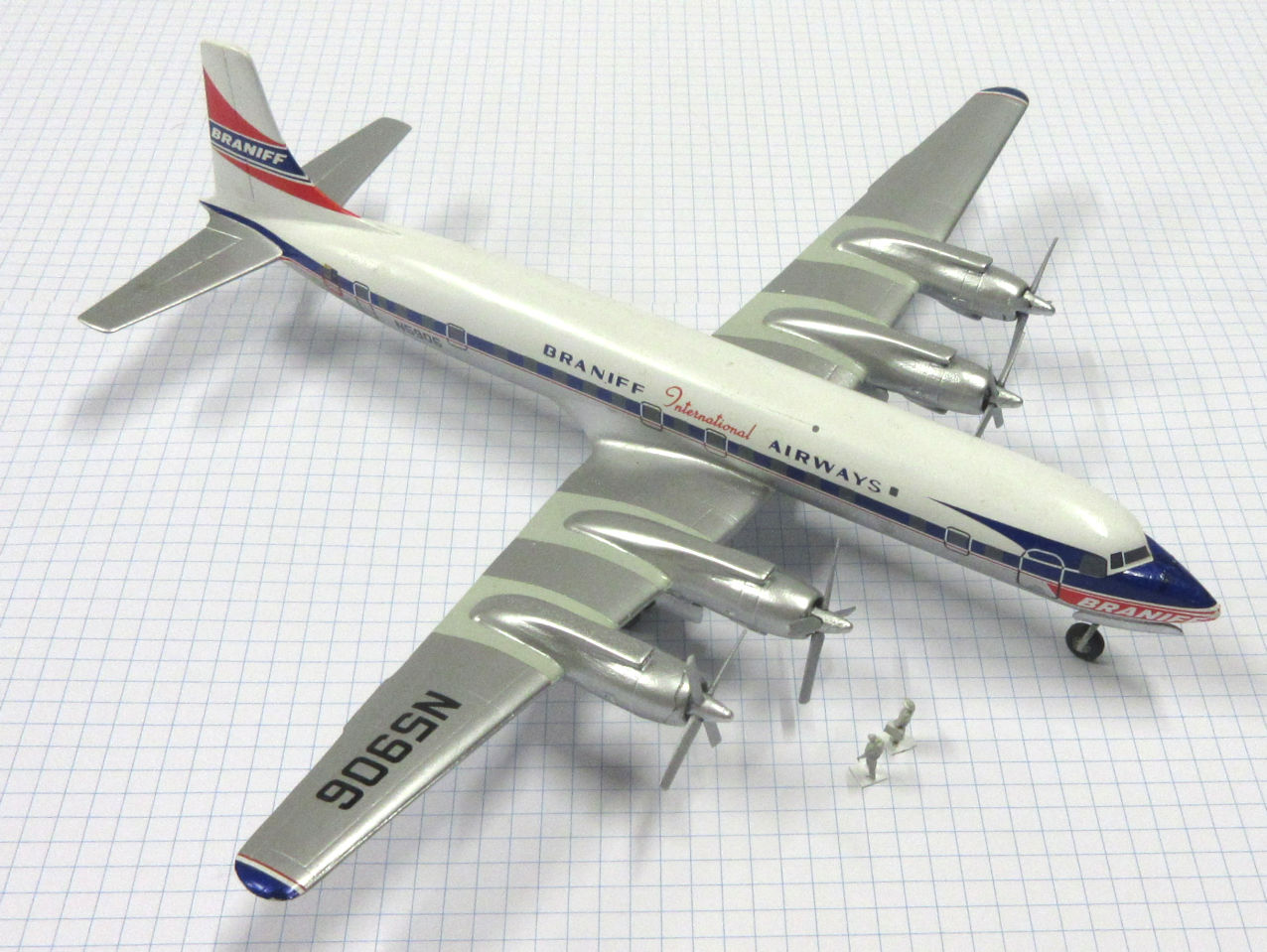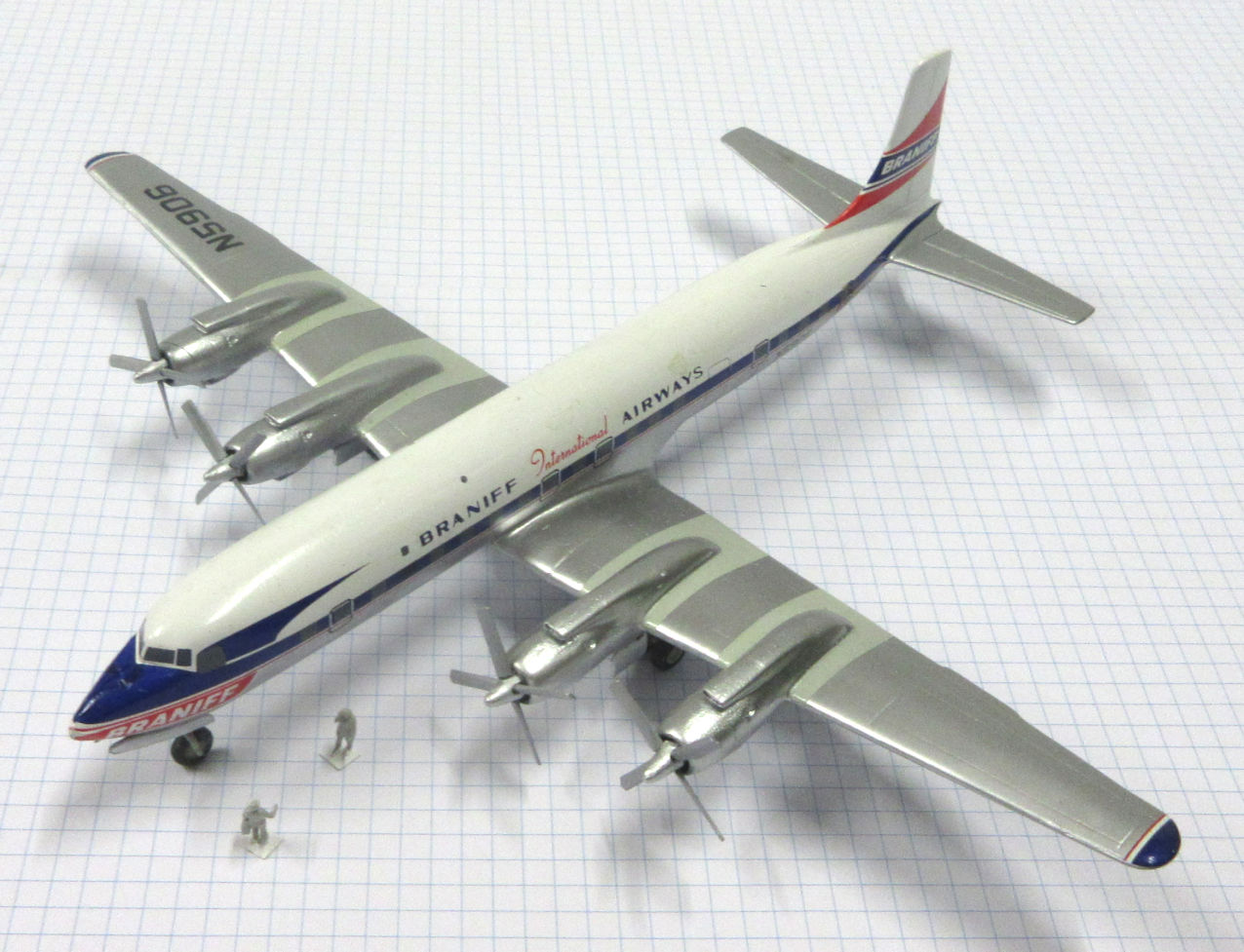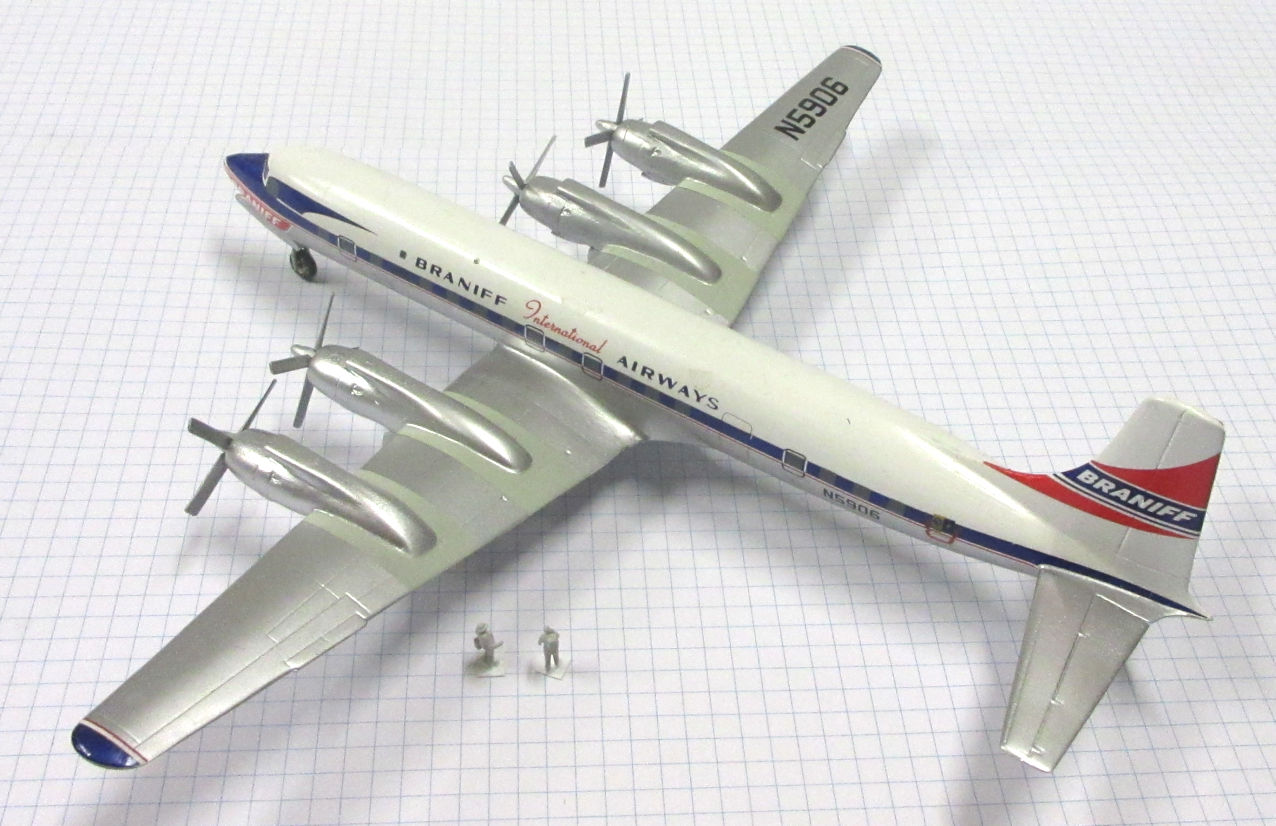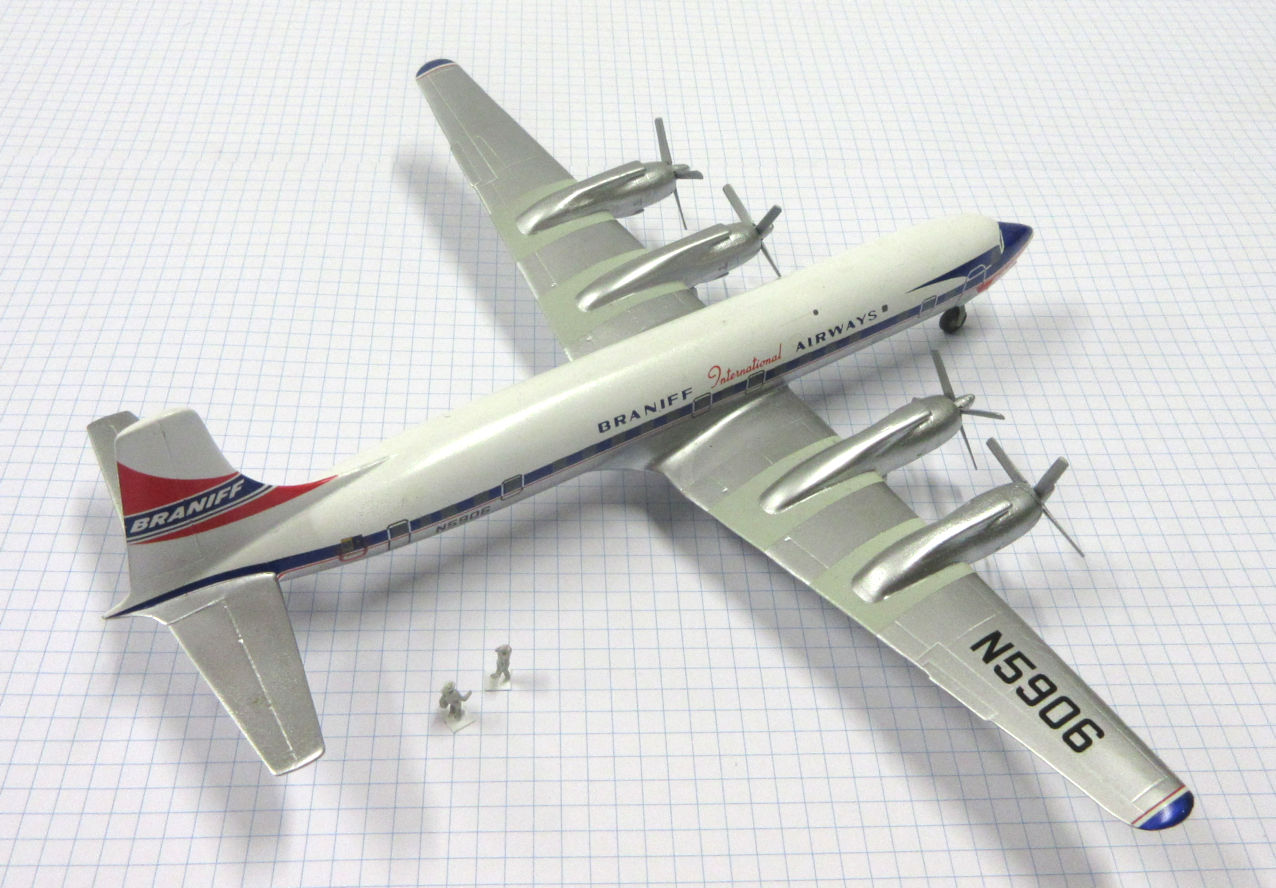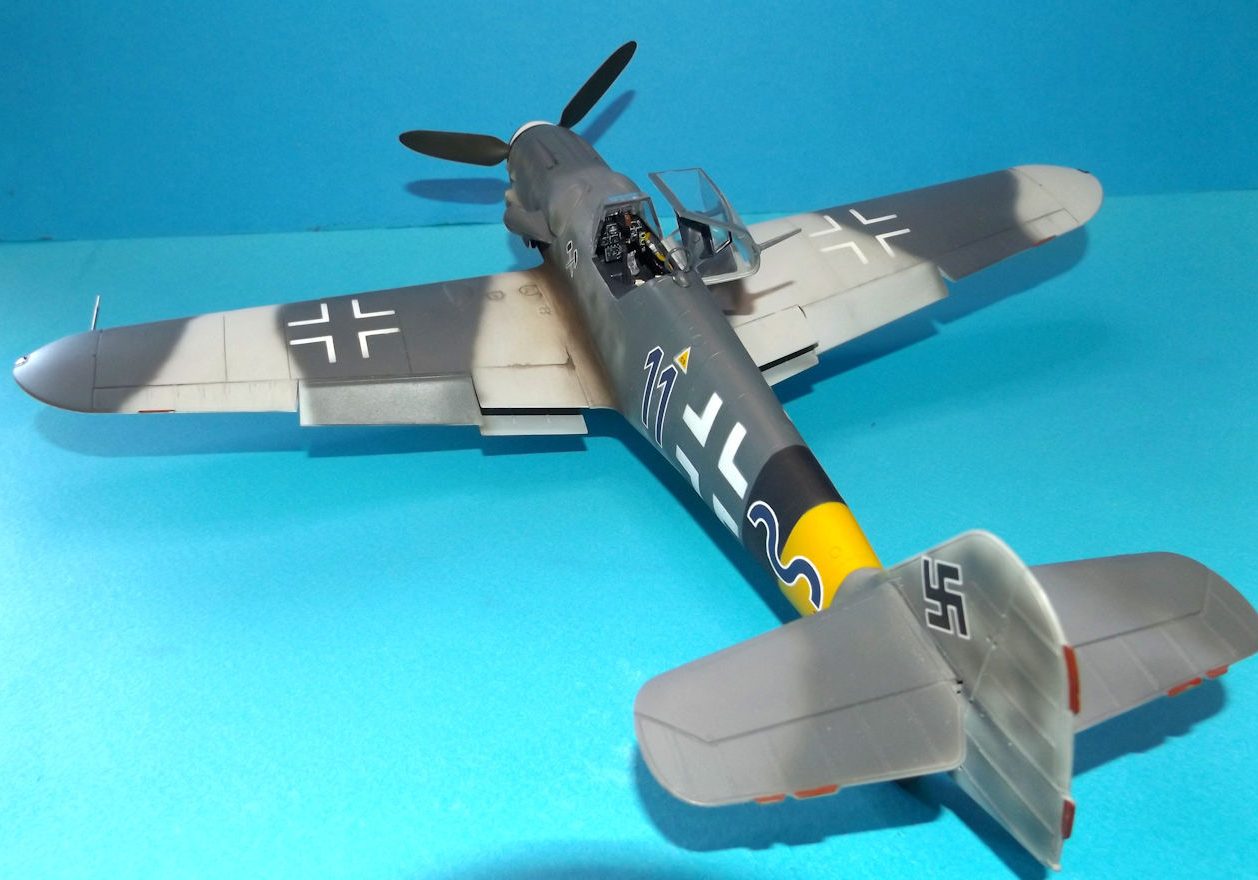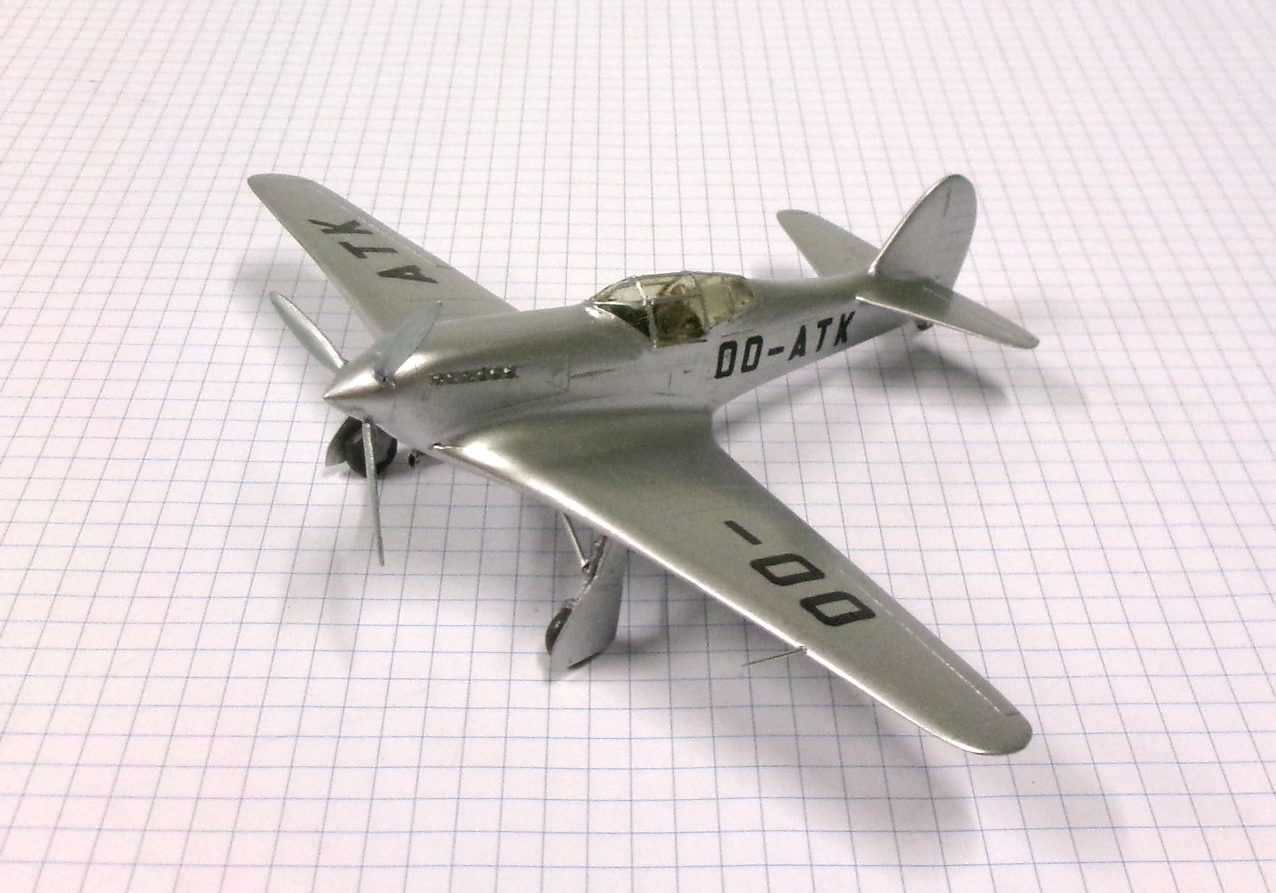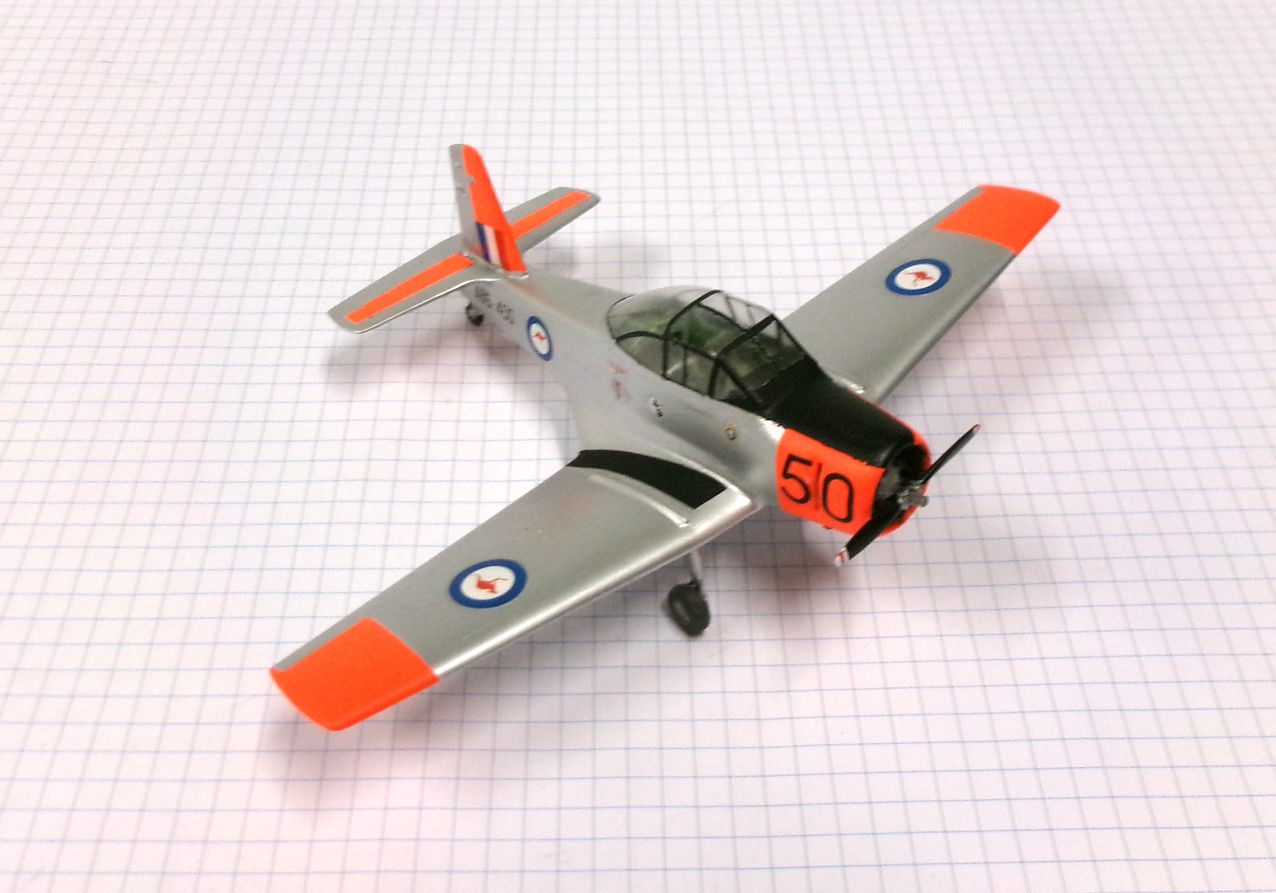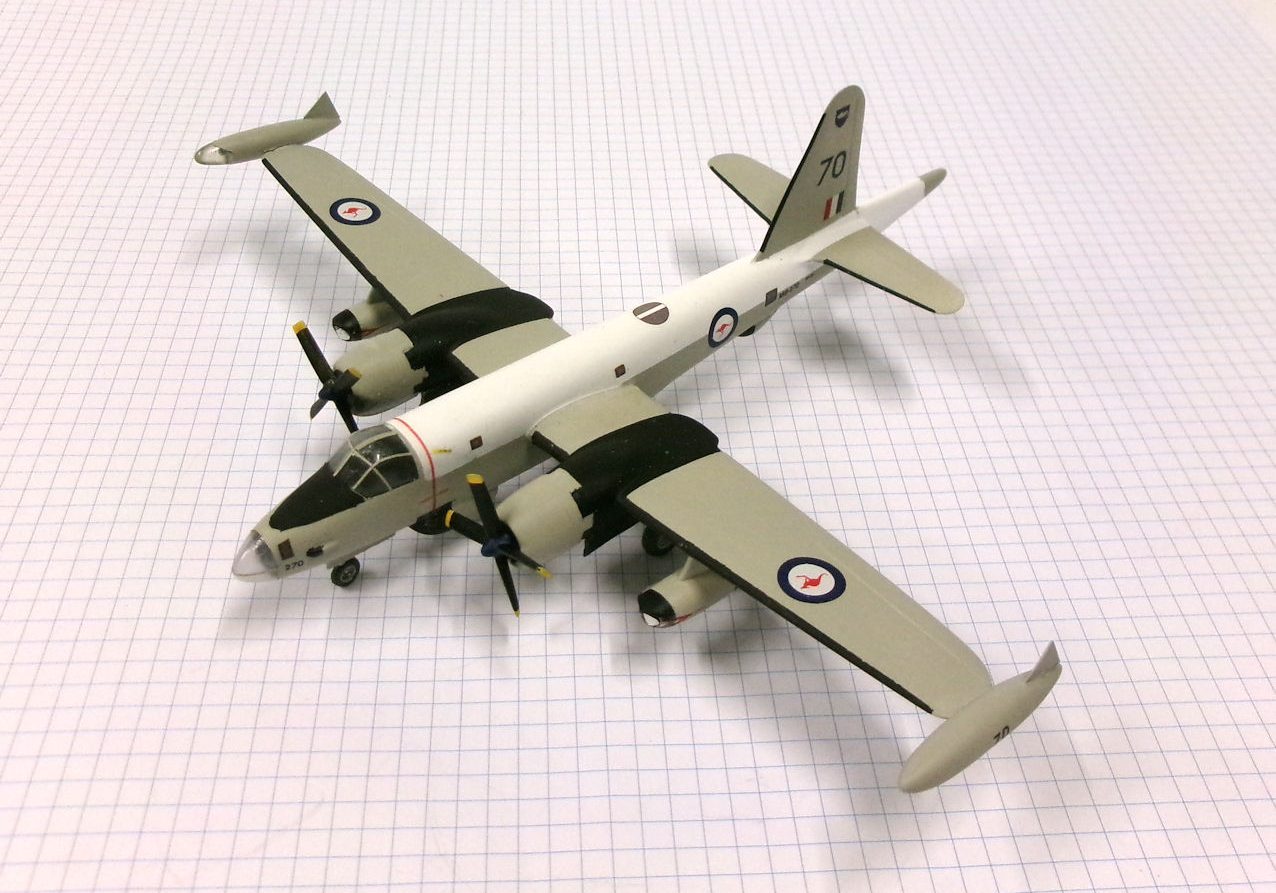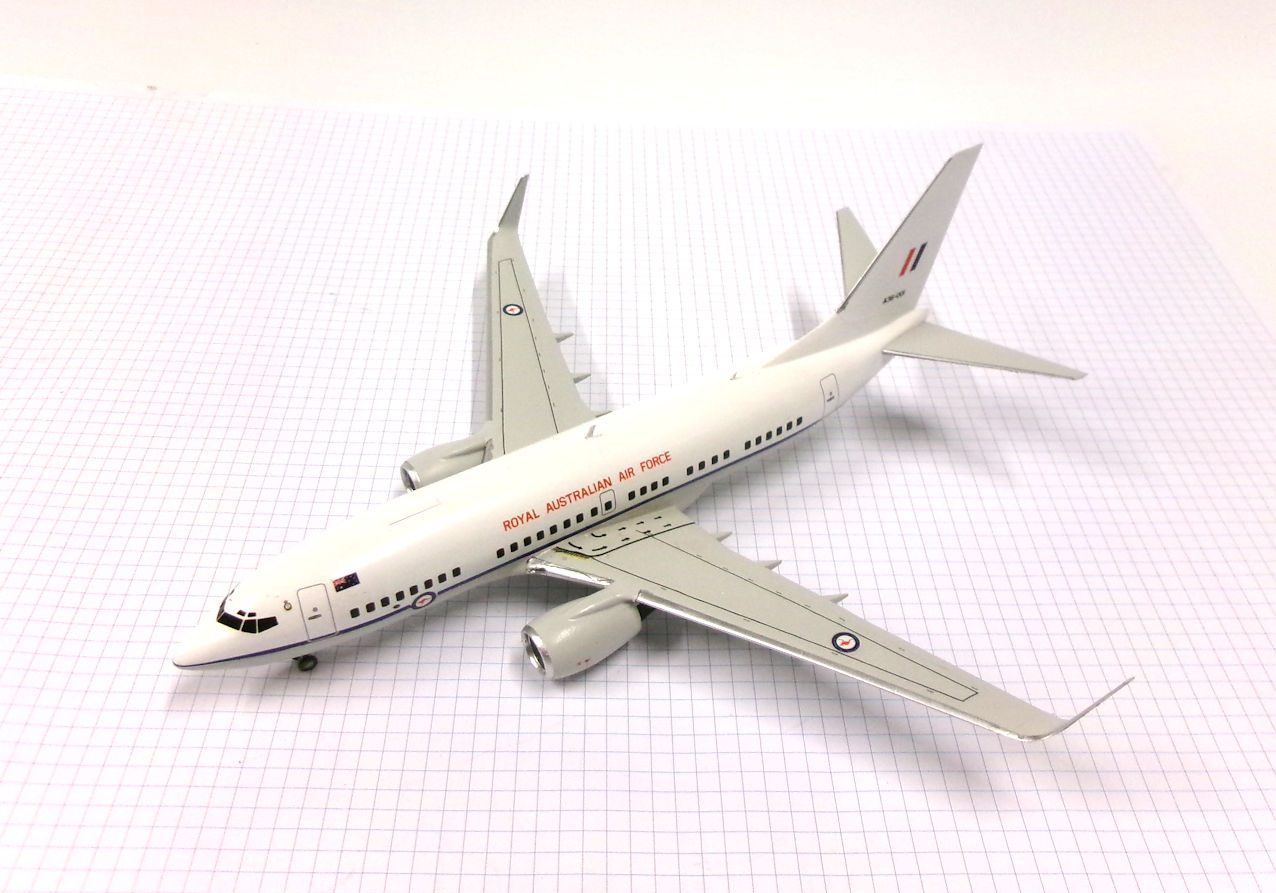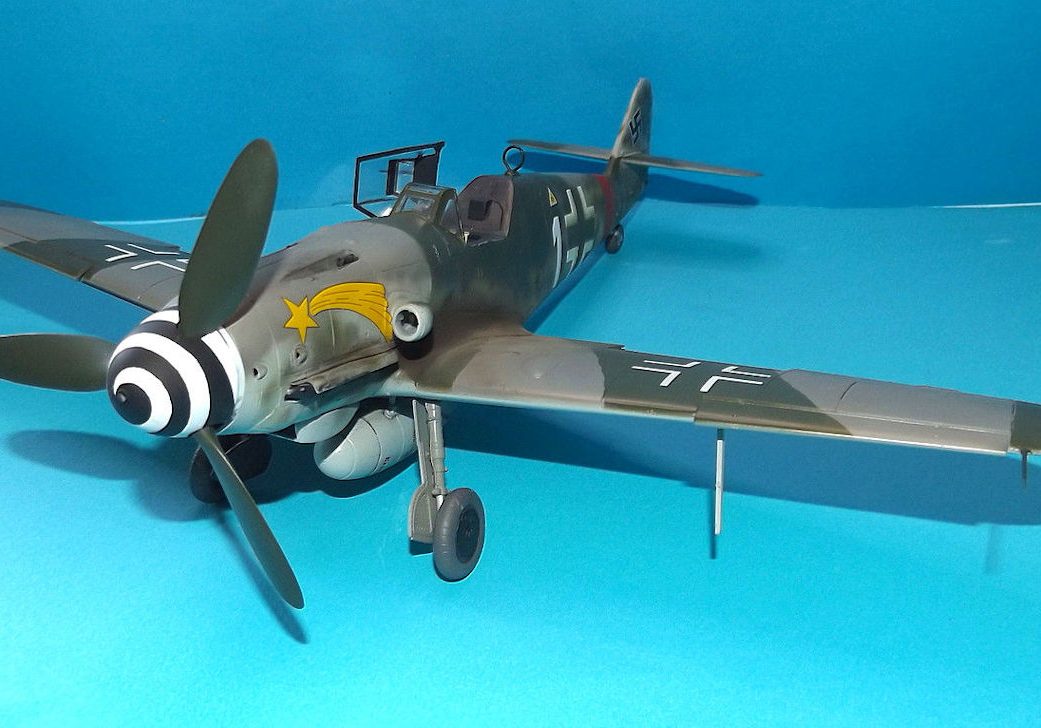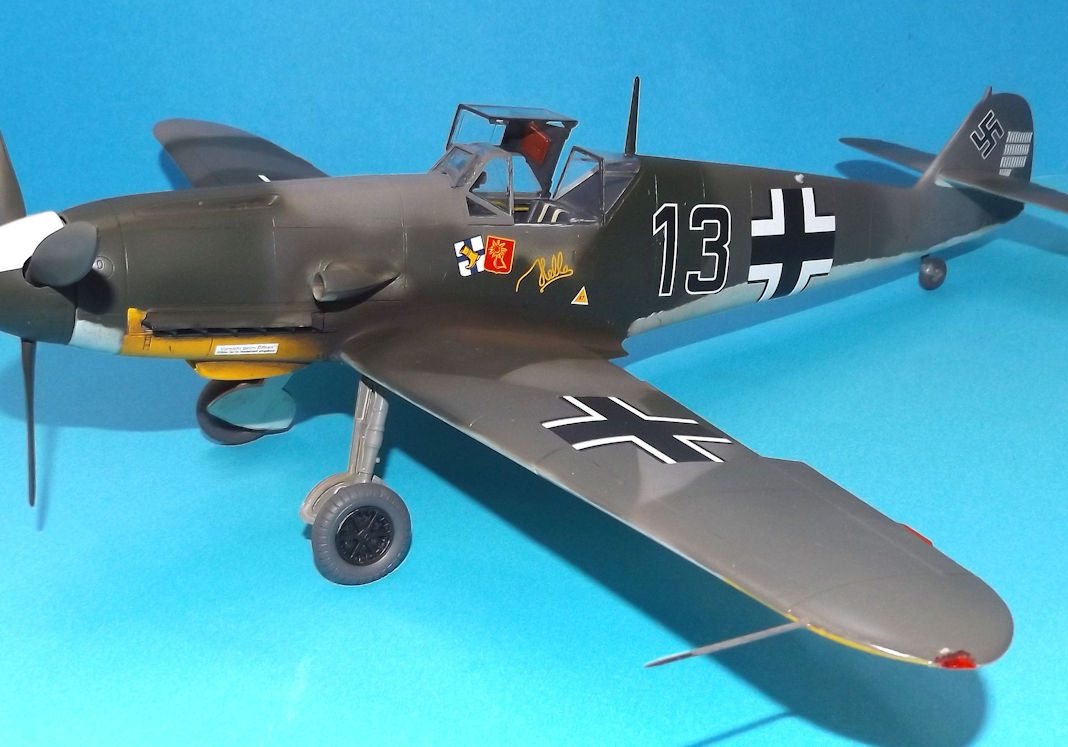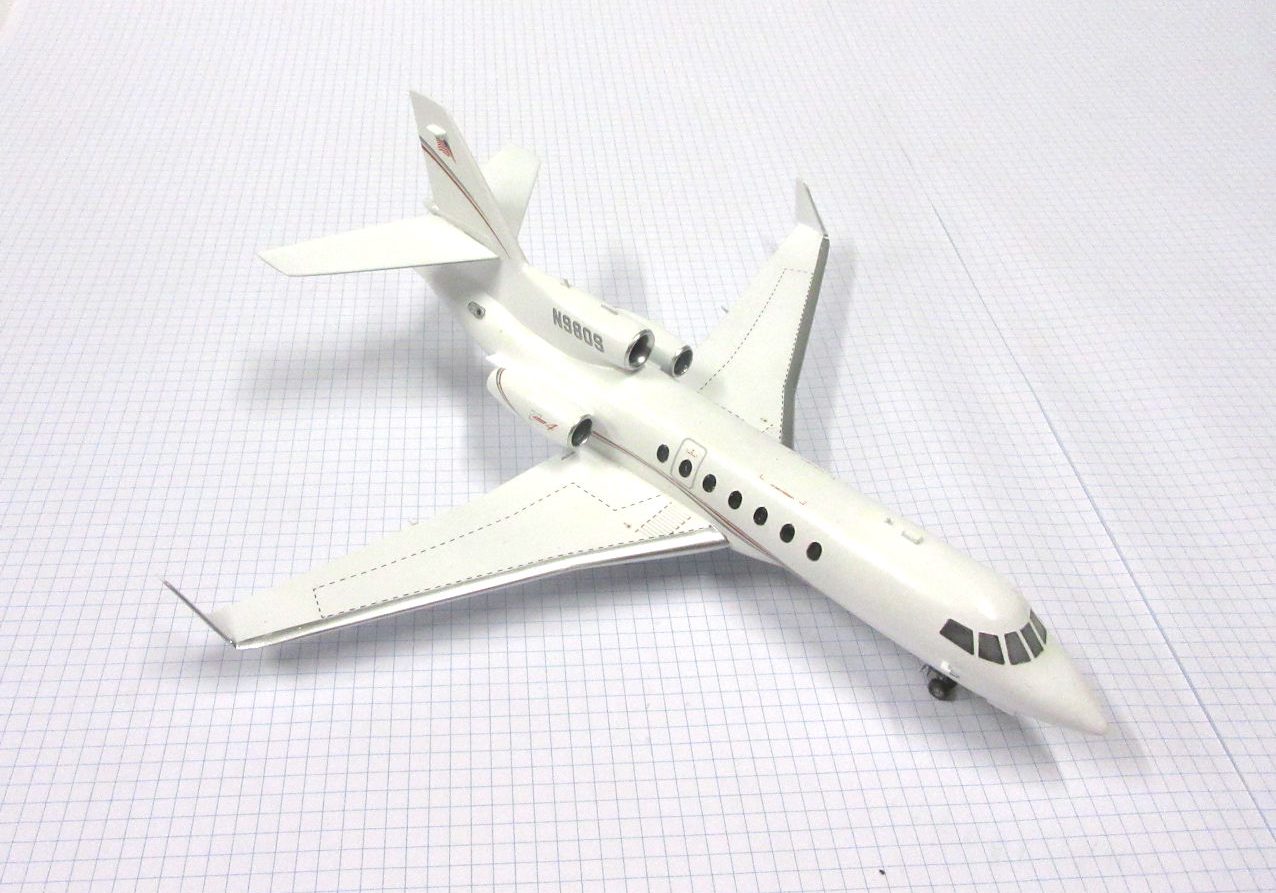History
The Douglas DC-7C was the final piston engine airliner designed and constructed by the Douglas company. It was capable of flying across the Atlantic Ocean non stop either way but was superceded by early jet airliners.
Development of the DC-7 began in the early 1950s to create an airliner based on the earlier DC-6 airliner and capable of flying non-stop across America.
The prototype DC-7 flew in May 1954 and the DC-7C, with extended fuselage and wing span, designed to fly non-stop across the Atlantic Ocean against headwinds, entered service in 1956.
A total of 122 DC-7Cs were made but sales were cut short by the introduction of new jet airliners such as the DC-8 and Boeing 707.
Braniff Airways began flying in the US mid-west in the 1930s and began international services in the 1940s. It went bankrupt in the chaos following airline deregulation in 1978.
This model represents a DC-7C flying with Braniff Airways in 1958.
F-Rsin 1/144 kit completed by Leigh Edmonds in January 2011.
